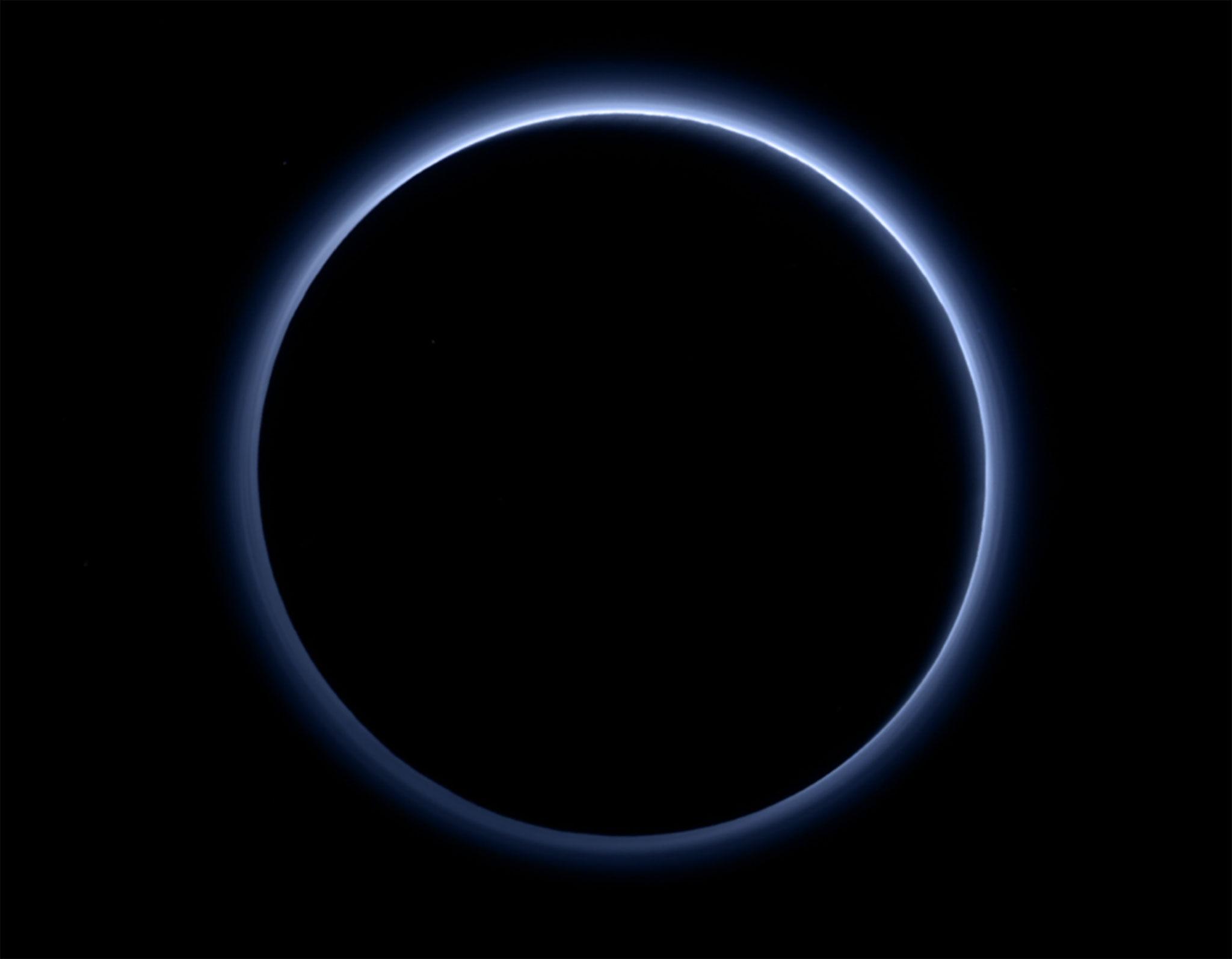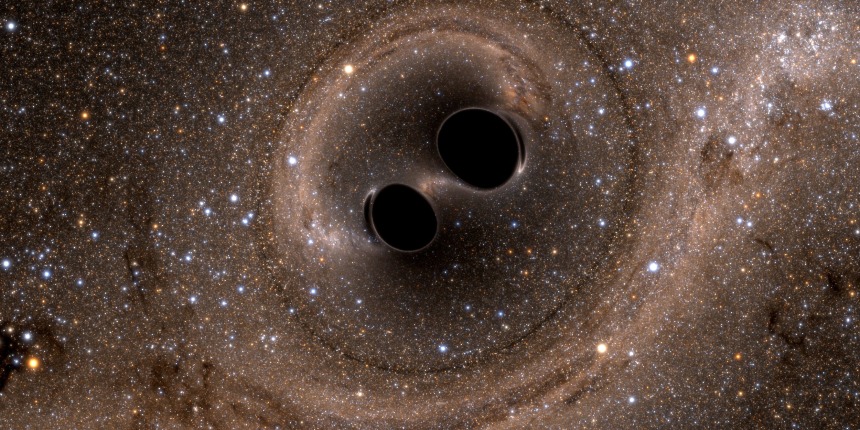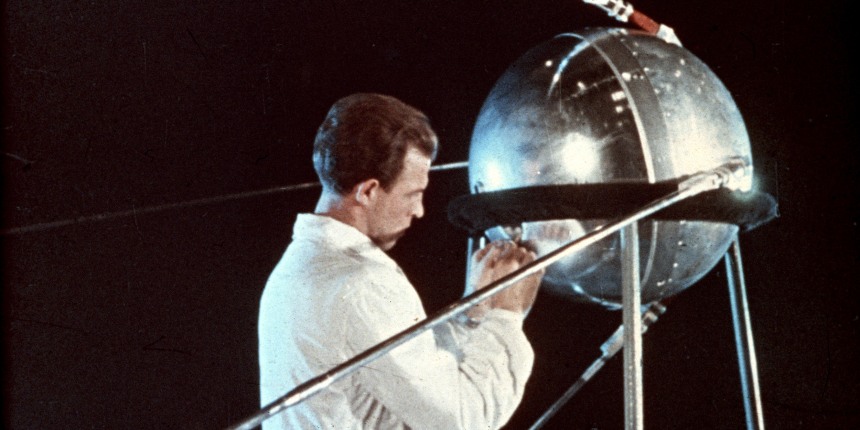
When the New Horizons space probe was preparing for its Pluto flyby, the question of whether or not there are rings around Pluto was a matter of concern – a collision with even the smallest particle could have caused serious damage to the spacecraft. Previous data from Hubble had not indicated the presence of rings, but the New Horizons team needed to be certain. So prior to the flyby, researchers studied images from New Horizon’s Long Range Reconnaissance Imager camera to see if any ring particles were reflecting sunlight. They determined it was safe to proceed with the flyby, which gave New Horizons a new vantage point to observe for rings, looking for dust particles that would be backlit by the Sun. SETI Institute scientist Matt Tiscareno told Science News:
“If you really want to know for sure whether there’s any dust there, the viewing geometries where you’re looking past the dust with the Sun in the background, that’s the gold standard.”
New Horizons’ next destination will be an object in the Kuiper Belt, MU69, which it will reach in January 2019.
-
Science News: Why It’s Good News that Pluto Doesn’t Have Rings
 The Persistent Mystery of Tabby’s Star
The Persistent Mystery of Tabby’s StarKIC 8462852, Tabby’s Star, is famous because of the persistent mystery of its strange behavior. From time to time it dims, sometimes by as much as 22%. There does not appear to any regularity to this dimming, and while there are many theories about the cause, none has yet been proven. Some of these ideas include: a Dyson swarm (or alien megastructure); a cluster of comets or comet debris; peculiar behavior of the star itself; or an instrumental glitch. In the case of the last idea, Doug Caldwell, SETI Institute researcher and instrument scientist for the Kepler mission, didn’t think it was likely. As he wrote in an article for Phys.org:
No, for two reasons. First, the results are the same, regardless of which of the telescope's detectors were observing the star, ruling out a defect on the lens of the photometer, or the on-board camera. Second, the enormous drops in brightness were already visible in every single pixel attributed to this star in the Kepler images. Usually all those pixels need to be added together and the total brightness of a star measured, in order to detect a change; if any pixels belonging to another star are mistakenly included, this can create a false positive. That was clearly not the case here.
- Phys.org: The Scientific Quest to Explain Kepler’s Most Enigmatic Find
- SETI.org: Has Tabby’s Star Mystery Finally Been Solved?
- SETI.org: What’s Up With Tabby’s Star?
 Gravitational Waves
Gravitational WavesGravitational waves are ripples in space, similar to ripples caused when a stone is tossed in the water, only gravitational waves are corrugations in space/time, not in a medium such as water. This year’s Nobel Prize for Physics was awarded to researchers who proved that gravitational waves are real using the Laser Interferometer Gravitational Wave Observatory (LIGO). While LIGO first confirmed the existence of gravitational waves in 2016, a fourth event was detected just prior to the Nobel Prize announcement.
Writing for NBC News, SETI Institute Senior Astronomer Seth Shostak notes:
"But gravitational waves can also tell us about events we cannot see, such as the catastrophic collision of orbiting black holes, the assumed cause of the gravitational waves found so far. This is, again, a window into fundamental physics."
Future instruments could clue us in to details of the Big Bang’s early days. With ordinary telescopes, we can see back only to within about 400,000 years of that boisterous birth before running into an opaque wall of bright light. But gravity waves can come to us from beyond the light barrier.
We could study the formation (and, obviously, the destruction) of black holes, or the details of stars that explode as they grow old.
 Sputnik
SputnikOctober 4th marked the 60th anniversary of Sputnik. Sputnik was the first satellite to be launched into orbit around Earth, and it was sent into space by the Soviet Union at the height of the Cold War. Sputnik was a surprise to the world and triggered the so-called Space Race. SETI Institute Senior Astronomer Seth Shostak writes:
"[the] U.S. did something unprecedented and unrepeated: It greatly increased spending on science education. Improved course materials for high schools were developed, and within a year a new agency to promote space development was set up: NASA. It had money to pay for students seeking advanced degrees in the relevant sciences."
Have the lessons from Sputnik endured?
Last week, It’s in the Material examined spacesuit design and innovative materials used to “reboot the suit.” This episode included an interview with Dava Newman, the newest member of the SETI Institute’s Board of Trustees. This week, an encore presentation of On Defense
Last week’s Facebook Live featured Eduardo Bendek of the Baer Institute and SETI Institute scientist Franck Marchis talking about exoplanet detection and imaging. And this week we went behind the scenes of the SETI Institute’s radio show and podcast, Big Picture Science.
All past Facebook Live videos can be seen on the SETI Institute’s Facebook page at https://www.facebook.com/SETIInstitute/.
In other Facebook news, the Facebook page Apocolypse Now This features SETI Institute Senior Astronomer Seth Shostak and SETI Institute scientist Jon Richards discussing their work at the Allen Telescope Array (ATA) and the search for extraterrestrial life.
- East Bay Astronomical Society: October 14, Oakland, CA Franck Marchis will deliver a talk, The Search for a Cousin of Earth: Science or Fiction?
- Division of Planetary Sciences, October 15-20, Provo, UT SETI Institute Scientist Matt Tiscareno is a featured speaker who will present research on the planetary rings of Saturn and the Cassini mission. Other SETI Institute scientists whose work will be featured at the conference include Christina Dalle Ore, Melissa McGrath, Mark Showalter, Franck Marchis, Driss Takir, Robert Morris, Matija Cuk, Ross Beyer, David Hinson, Erin Ryan, and Peter Tenenbaum.
- SETI Talks: October 26, Menlo Park CA Featuring David Grinspoon and a discussion of the Anthropocene.
- American Geophysical Union: December 11-15, New Orleans, LA SETI Institute Scientist Matt Tiscareno will present research on the rings of Saturn and other results from the Cassini mission.





